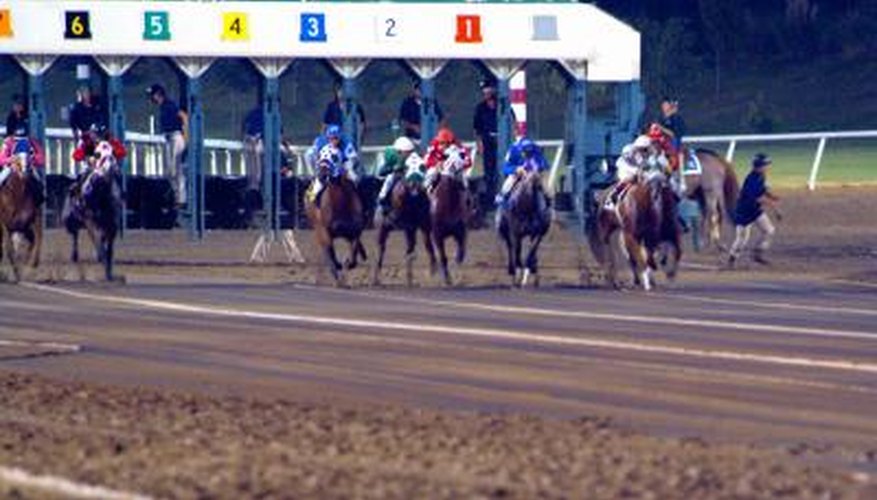Computing speed figures used to be a laborious task, requiring the horse racing handicapper to spend many hours putting together a system to determine accurate figures at a particular track or tracks. The point of creating speed figures is to compare the "true" time of each horse compared to the relative quickness or slowness of the track surface on a particular day. Then along came "Washington Post" racing writer and avid horse player Andy Beyer, who, in the 1970s, explained how to calculate a sophisticated set of speed figures in several books. In the early years of the 21st century, Beyer speed figures began appearing in the "Daily Racing Form," so you no longer need to calculate your own figures. However, for those so inclined, making your own speed figures enables you to check your own figures against the Beyer numbers. Especially at smaller tracks, Beyer figures might not be as good as your own figures, especially if you have an in-depth knowledge of the horses at your local track.
- Computing speed figures used to be a laborious task, requiring the horse racing handicapper to spend many hours putting together a system to determine accurate figures at a particular track or tracks.
- In the early years of the 21st century, Beyer speed figures began appearing in the "Daily Racing Form," so you no longer need to calculate your own figures.
Acquire par figures. Par figures are the average times that horses run in terms of distance and classification: For example, £6,500 claiming races for horses racing 6 furlongs. You calculate par times by looking at result charts from races at a particular track and comparing the times run by horses on that day in different classifications of races to the par figures.
Calculate the par figure for each day of racing. You might average the differences from par in each race to derive the par figure of the day, or take a more subjective and sophisticated approach to determine what overall par number for the day makes the most sense.
Apply the par figures to the horses you are evaluating. For example, Horse A in a £13,000 claiming race runs 1 mile in one minute, 36 seconds on February 14 and the par for that classification is one minute, 37 seconds. The horse has run one second faster than par. One second equates to roughly five lengths. Therefore, the horse has run five lengths faster than par and his "true" figure for the race is one minute, 35 seconds.
- Calculate the par figure for each day of racing.
- Therefore, the horse has run five lengths faster than par and his "true" figure for the race is one minute, 35 seconds.
Compare the "true" times for each horse in the race. Using the above example, let's say Horse B ran a mile in one minute, 36 seconds on February 21, when the track was rated one second faster than par time. Therefore, the "true" time for Horse B would be one minute, 37 seconds. Although both horses ran the same "raw" time, one minute, 36 seconds, Horse A is actually two seconds, or a whopping 10 lengths, faster than Horse B.
TIP
A more sophisticated method of calculating speed figures is known as the projection method. It involves looking at a set of result charts and evaluating the time the winning horse and the runner ups "should" have run and comparing that time to the final time of the race. The difference is used as the par figure for that race. You have to know the particular horses running at the track you are evaluating extremely well to make the projection method work.
WARNING
Speed figures provided a real edge to handicappers who calculated their own figures in the days before Beyer figures became a staple of the "Daily Racing Form." Now everyone who buys a "Daily Racing Form" has access to high-quality speed figures and the edge is gone. So learning more sophisticated ways to use Beyer speed figures is the new challenge for horse players looking for an edge. Betting the horses is a challenging and difficult game. It is extremely difficult to win money at the track. So treat it as a recreational activity and don't bet more than you can afford to lose.
